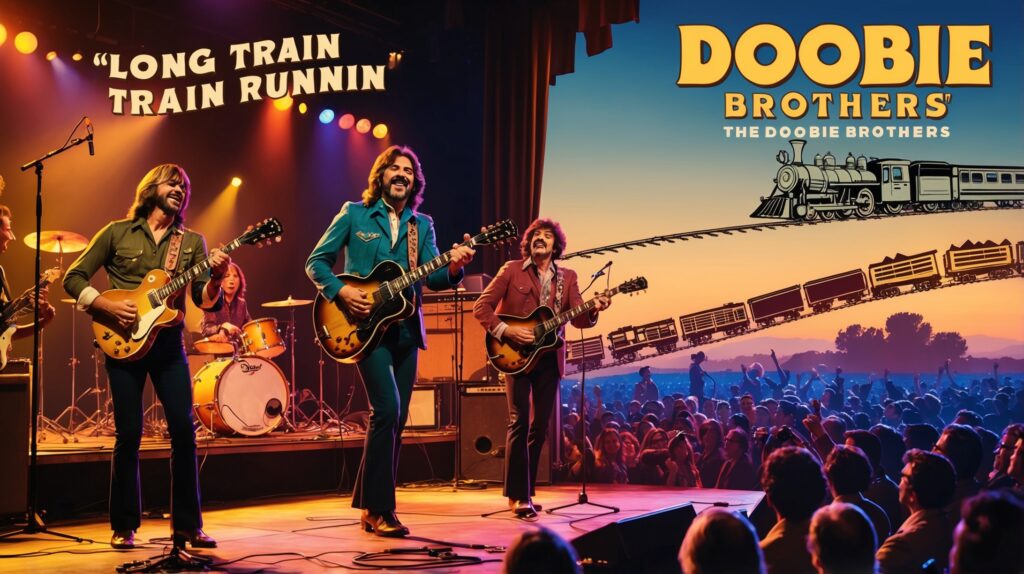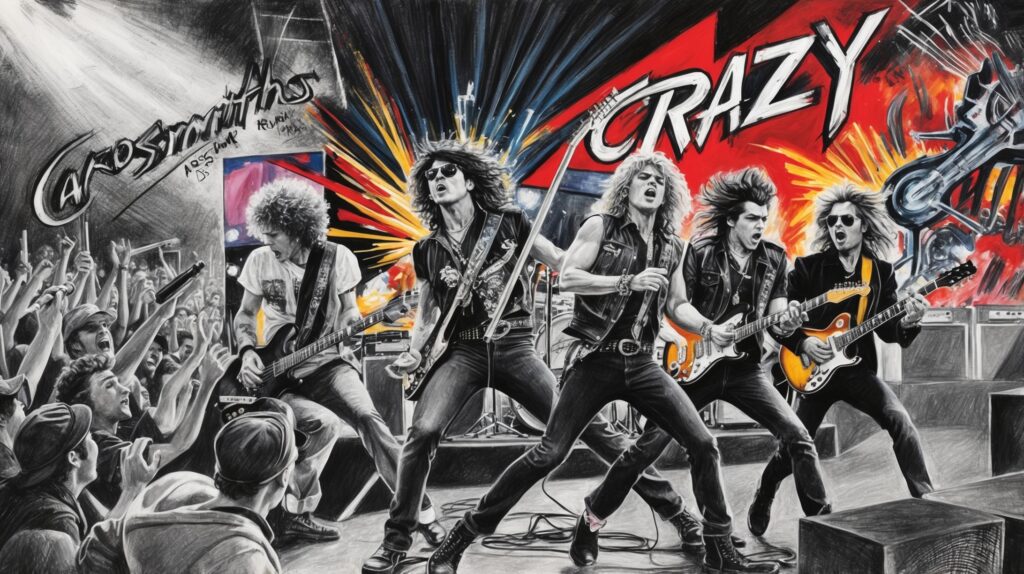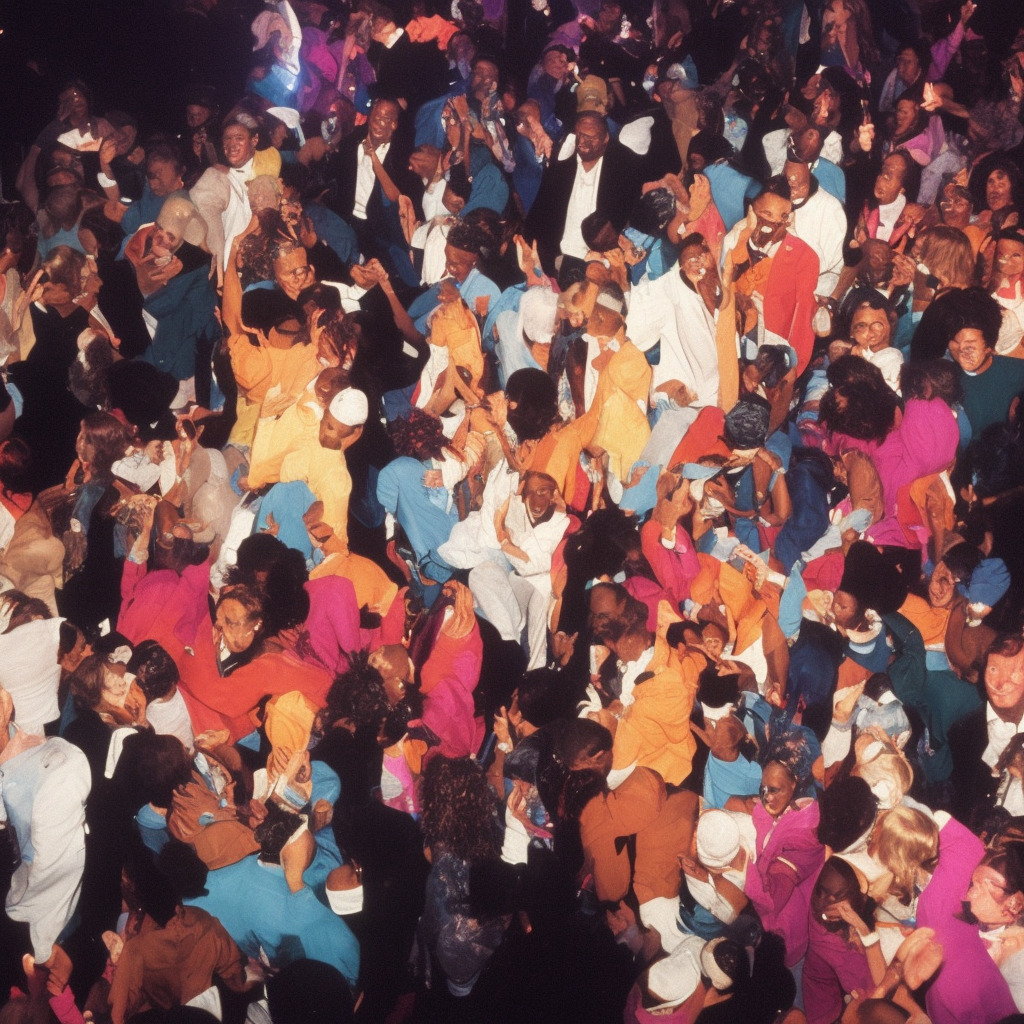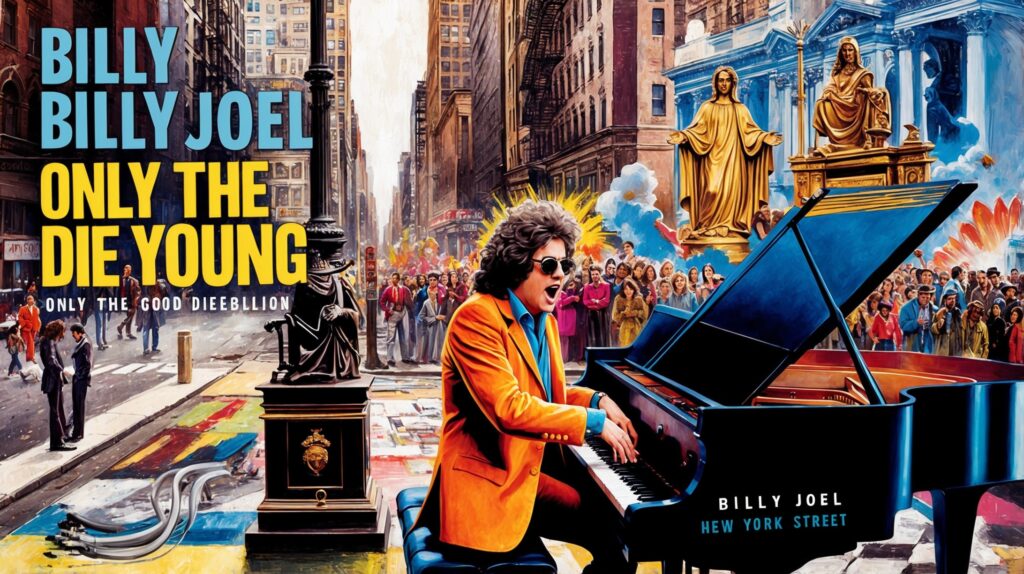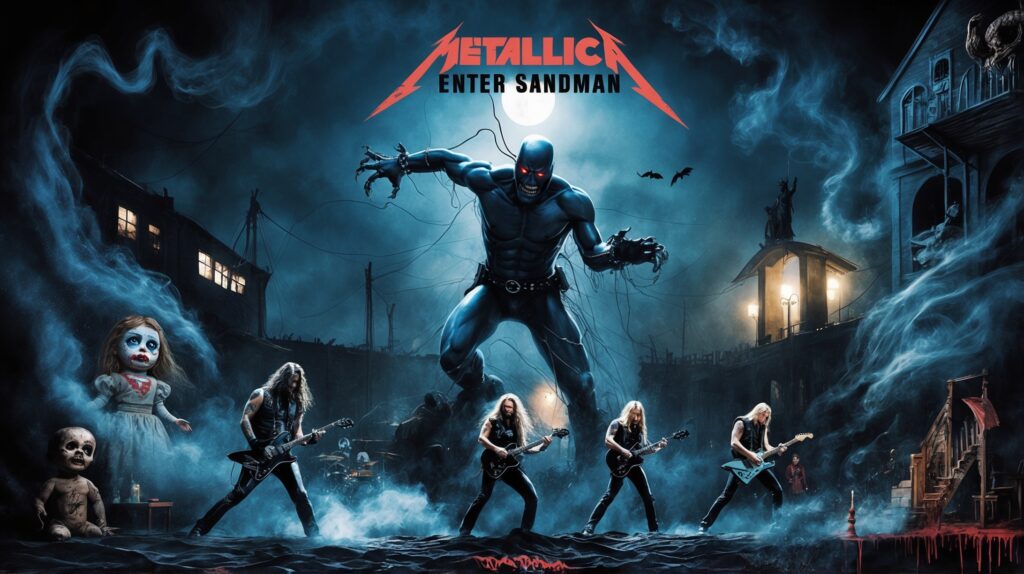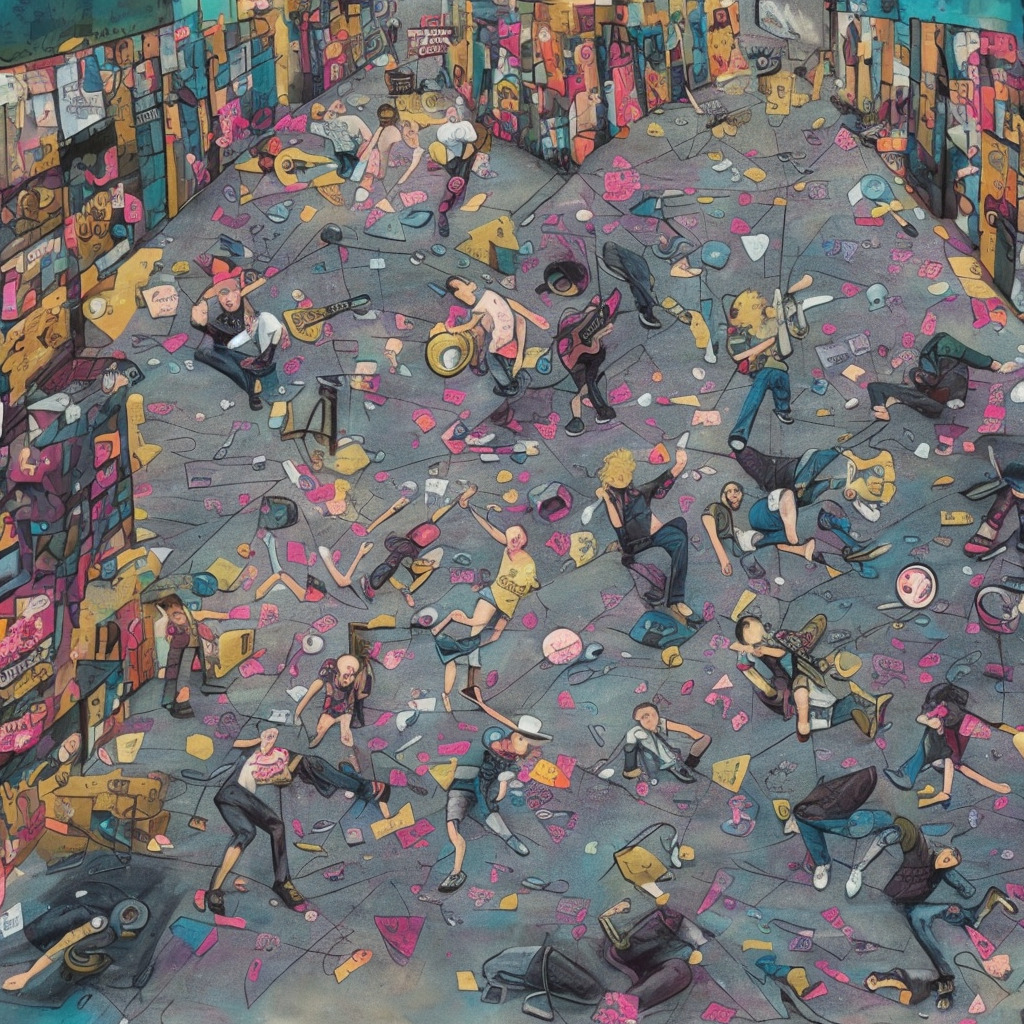Doobie Brothers | Long Train Runnin’
The Doobie Brothers: Rocking the Airwaves Since the ’70s
Discover the journey of The Doobie Brothers, a band that defined an era with their harmonious mix of rock, pop, and soul, focusing on their signature hit, “Long Train Runnin’.”
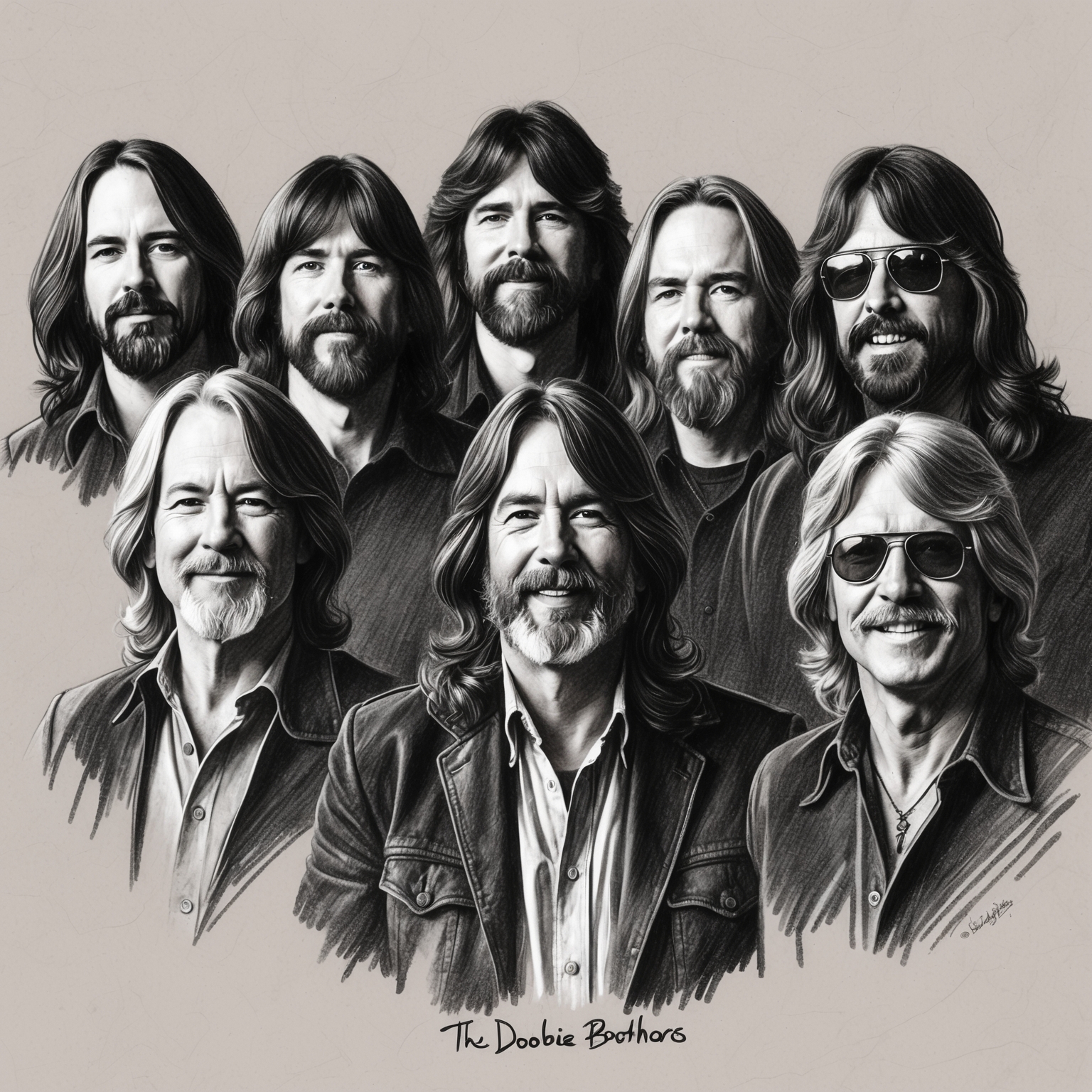
Emerging in the early ’70s, The Doobie Brothers quickly became a staple in the world of rock music, punctuating the airwaves with their distinctive sound. Known for their harmonious fusion of rock, pop, and soul, this band’s versatility can be greatly attributed to their signature song, “Long Train Runnin'”. This track not only solidified their spot in the charts but also showcased their ability to blend various musical elements seamlessly.
The origins of the band trace back to San Jose, California, where founding members Tom Johnston, Patrick Simmons, and John Hartman first came together. Initially, they played local clubs and bars, cultivating a following with their dynamic live performances. Over the years, the band saw several changes in their lineup, with musicians like Michael McDonald joining in the mid-’70s, bringing his soulful voice and influence to their evolving sound.
Aside from their electrifying live presence, The Doobie Brothers’ contribution to music is further amplified by their collaborative spirit. Their partnerships with prolific producers such as Ted Templeman played a crucial role in shaping the unique sonic landscapes of their albums. As “Long Train Runnin'” hit the scene in 1973, it was met with enthusiasm, not just from fans, but within the music industry at large, during a time when rock music was undergoing transformative changes. This song captured the essence of its era and remains an enduring piece of their legacy.
Tom Johnston: The Crossover Genius Behind the Hit
Explore the musical genius of Tom Johnston, the mastermind behind the Doobie Brothers’ hit ‘Long Train Runnin”. Discover his artistic journey, style, and the unique role he played in the song’s creation, making it a timeless classic.
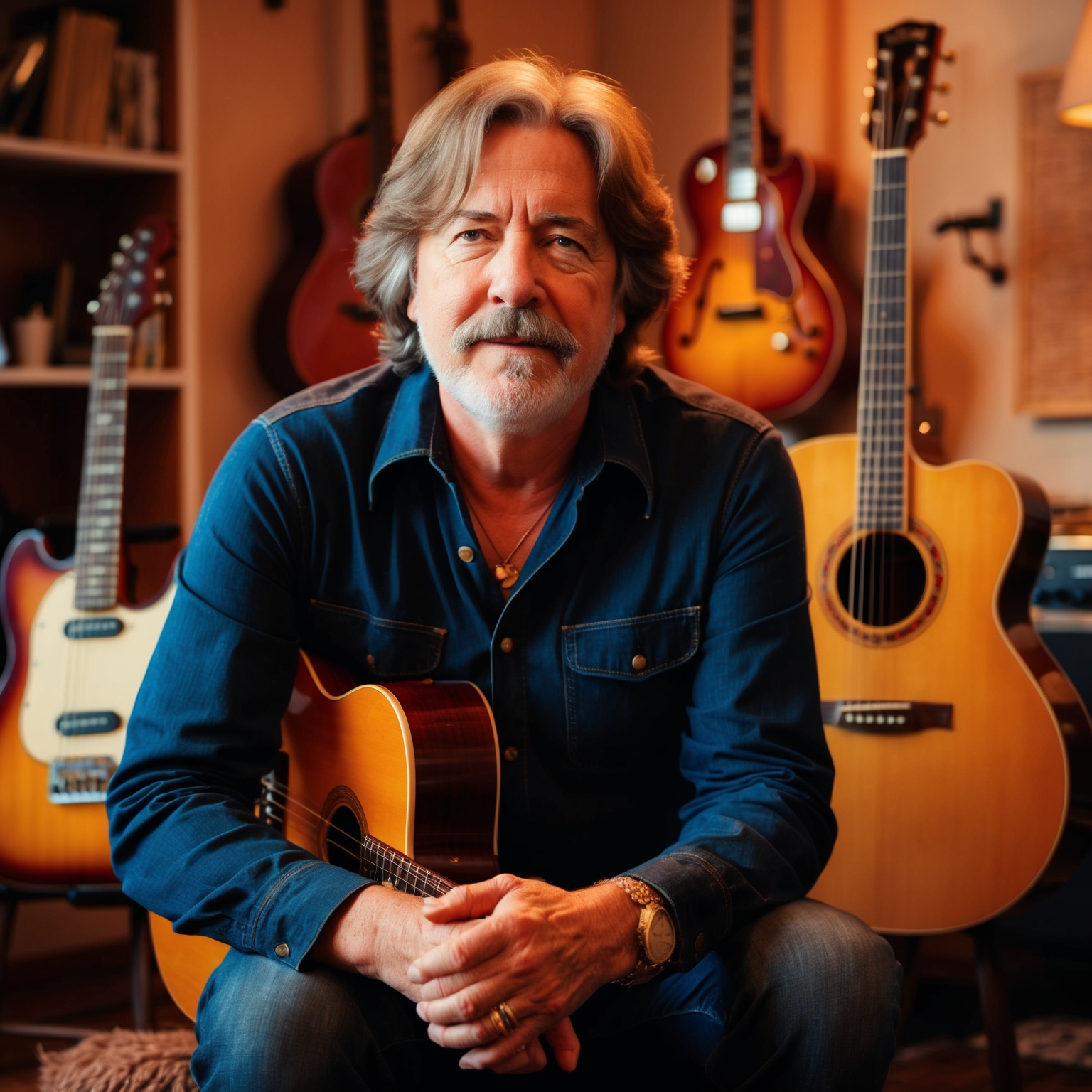
Background and Career: Tom Johnston, the prolific talent behind “Long Train Runnin’,” carved his path in music history as a key figure in the Doobie Brothers. Born in Visalia, California, Johnston found his calling in music from an early age, eventually bringing his eclectic style to the forefront of American rock. By the late 1960s, he had already begun to establish his unique sound that would later define the Doobie Brothers’ signature hits. Johnston’s early career was peppered with jazz and rhythm and blues influences, shaping his musical direction and setting the foundation for his successful tenure with the Doobies.
Musical Style and Influences: Johnston is renowned for his adept blending of rock, soul, and blues elements, a fusion that has become synonymous with the Doobie Brothers’ sound. His songwriting prowess is rooted in a deep appreciation for the rich tapestry of American music, drawing inspiration from traditional blues greats like B.B. King, as well as the innovative rock nuances found in bands like The Byrds and Creedence Clearwater Revival. This amalgamation of influences is unmistakably heard in songs like “Long Train Runnin’,” where his spirited guitar playing and rhythmic flair elevate the track’s dynamism.
Role in the Song’s Creation: For “Long Train Runnin’,” Johnston played a pivotal role as both the composer and performer. The track was initially born out of a spontaneous jam during live performances, with Johnston’s rhythm guitar creating a compelling framework. His ability to infuse energetic riffs with engaging storylines contributed to the song’s infectious groove and enduring popularity. Notably, Johnston’s melodic approach and rhythmic precision allowed the track to evolve from its live jam roots into a polished masterpiece. Additionally, his knack for crafting intricate guitar solos and catchy hooks ensured that “Long Train Runnin'” would resonate with audiences for decades.
Recognition and Legacy of ‘Long Train Runnin”
Long Train Runnin” by the Doobie Brothers stands out for its cultural impact and numerous covers. Although not heavily decorated with awards, the song’s inclusion in Rolling Stone’s ‘500 Greatest Songs of All Time’ list attests to its timeless resonance.
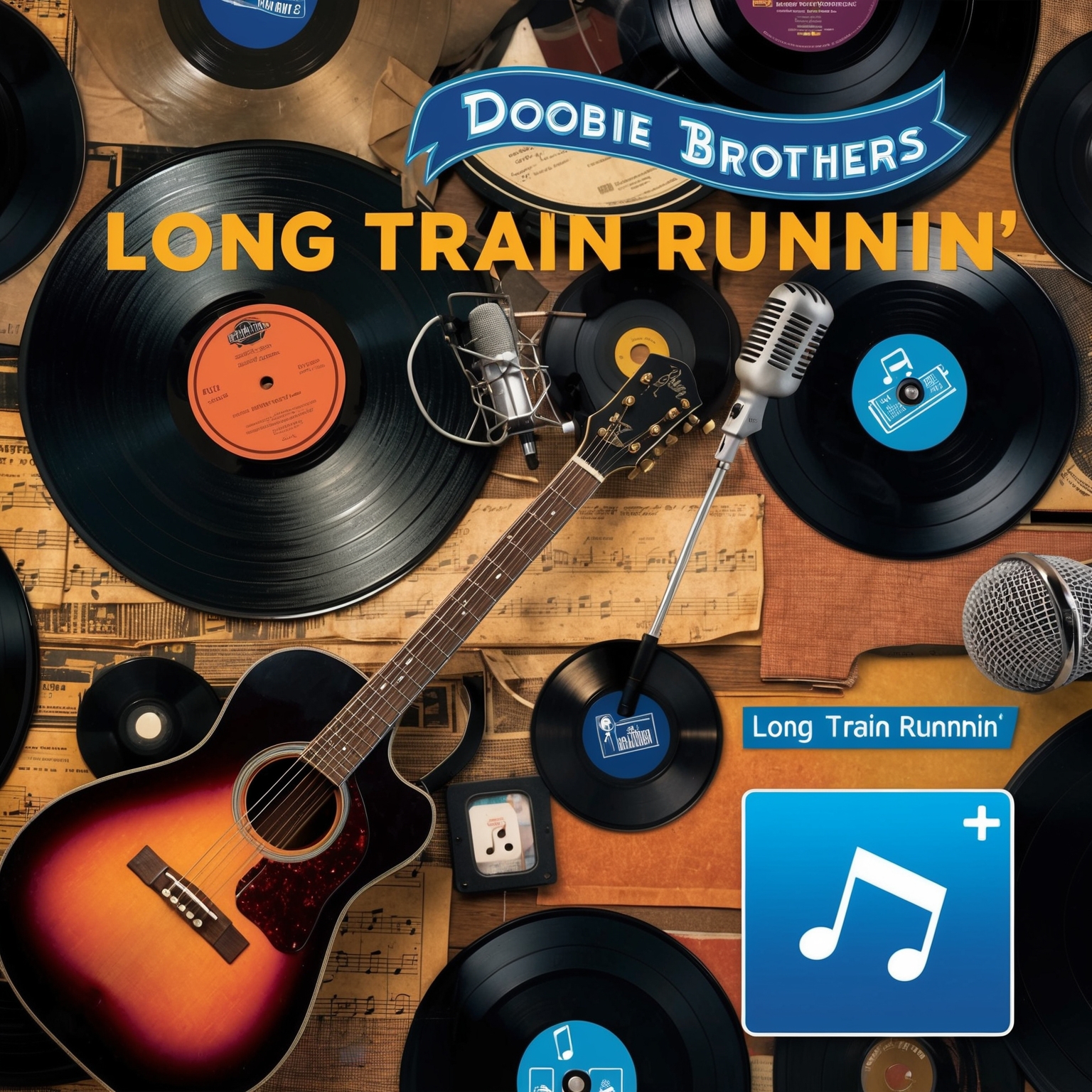
Over the years, ‘Long Train Runnin’‘ by the Doobie Brothers has carved out an enduring place in both popular culture and the world of music. Despite not being heavily adorned with conventional awards, the song’s true accolades lie in its lasting impact and the array of artists who have drawn inspiration from it. Its rhythm and energy have been captivating audiences since the song’s release in 1973, solidifying its presence as a perennial rock favorite.
Though the song itself may not have lined the Doobie Brothers’ trophy cabinet, it is regarded as one of their signature songs, frequently recognized for its infectious groove and timeless appeal. Its placement in Rolling Stone magazine’s list of the ‘500 Greatest Songs of All Time‘ is testimony to its significant cultural impact. It’s a track that has contributed immeasurably to the band’s reputation and enduring legacy in the rock genre.
Many artists have offered their renditions of ‘Long Train Runnin”, paying homage to its irresistible beat and undeniable hook. Notably, the Italian band Traks gave the song a new lease on life with a cover that became popular in the 1980s, bringing the classic sound to a fresh audience. Other cover versions have spanned genres, proving the song’s versatility and continued relevance across the musical spectrum. Additionally, the track has found its way into several live performances and tribute albums further cementing its status as a beloved classic.
Riding the Rails to Chart Dominance
Explore how “Long Train Runnin'” climbed the charts, making its mark as a top 10 hit in the 1970s, and how it became a cornerstone in the Doobie Brothers’ illustrious career.
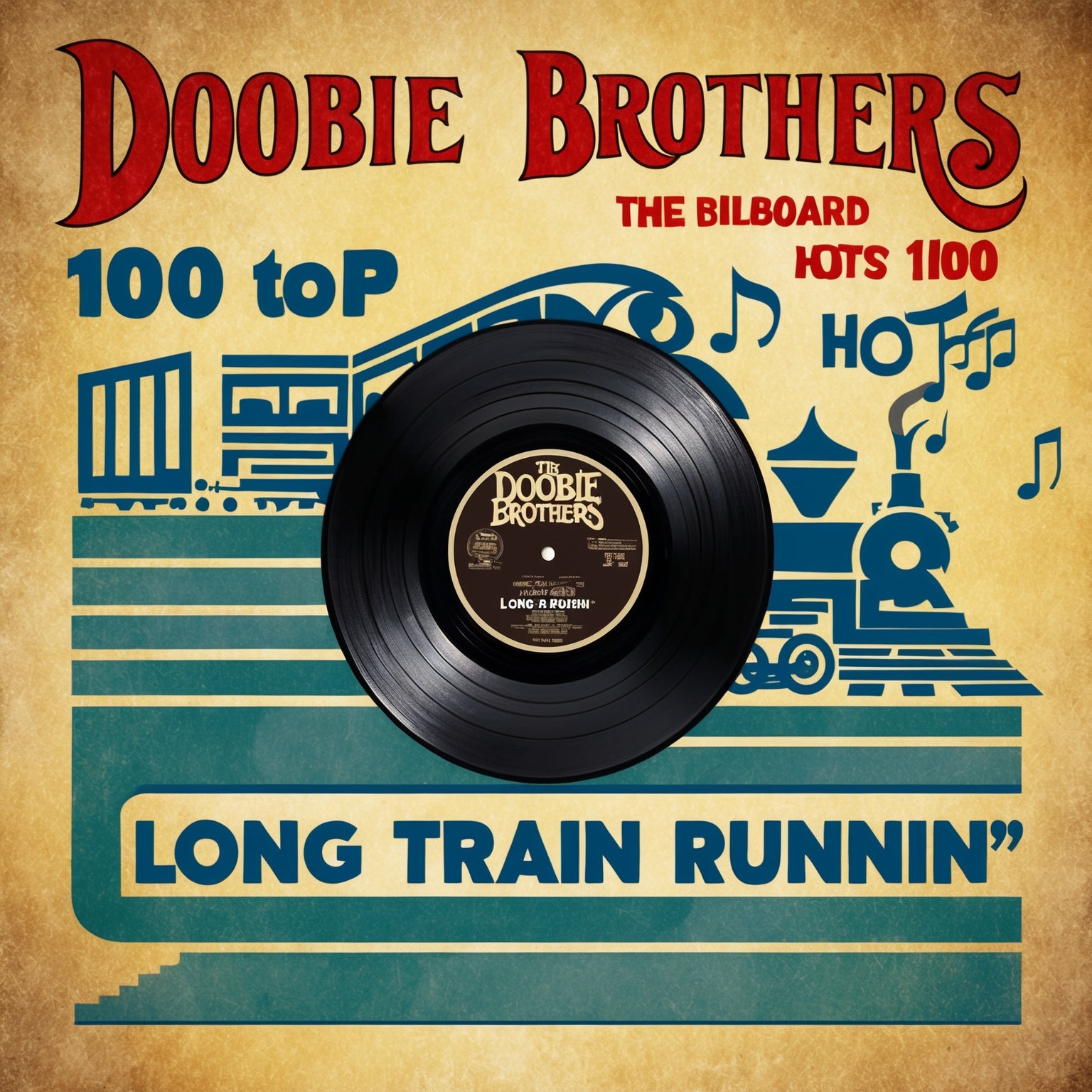
When the Doobie Brothers released “Long Train Runnin'” in March 1973, they were venturing into new musical territories, blending rock, R&B, and funk with an infectious groove that captivated audiences. Upon its release, the song quickly climbed the charts, entering the Billboard Hot 100 and making a steady ascent towards its peak. By June of the same year, “Long Train Runnin'” had reached the 8th position on the Billboard Hot 100, cementing its status as one of the band’s biggest hits of that era.
Compared to other tracks on the charts at the time, the song’s funky rhythm and catchy guitar riff stood out, offering a fresh sound that differentiated it from the mainstream rock ballads and pop tunes of the early ’70s. This distinctive style not only helped secure its top 10 position but also reinforced the Doobie Brothers’ reputation as innovative musicians capable of producing cross-genre hits.
The song’s success was a significant milestone in the Doobie Brothers’ career, marking a breakthrough that elevated them to a new level of popularity. It came at a time when the band was looking to solidify their place in the rock landscape, following previous hits like “Listen to the Music.” “Long Train Runnin'” played a crucial role in forging the band’s identity, paving the way for future successes and expanding their fan base globally. In the years that followed, the track would become one of their signature songs, frequently performed in concerts and revered by fans.
Visual Interpretations: Exploring the Song’s Legacy Through Video
Visuals of “Long Train Runnin'” are mostly derived from energetic live performances and creative fan interpretations, giving life to the song in the absence of an official music video.
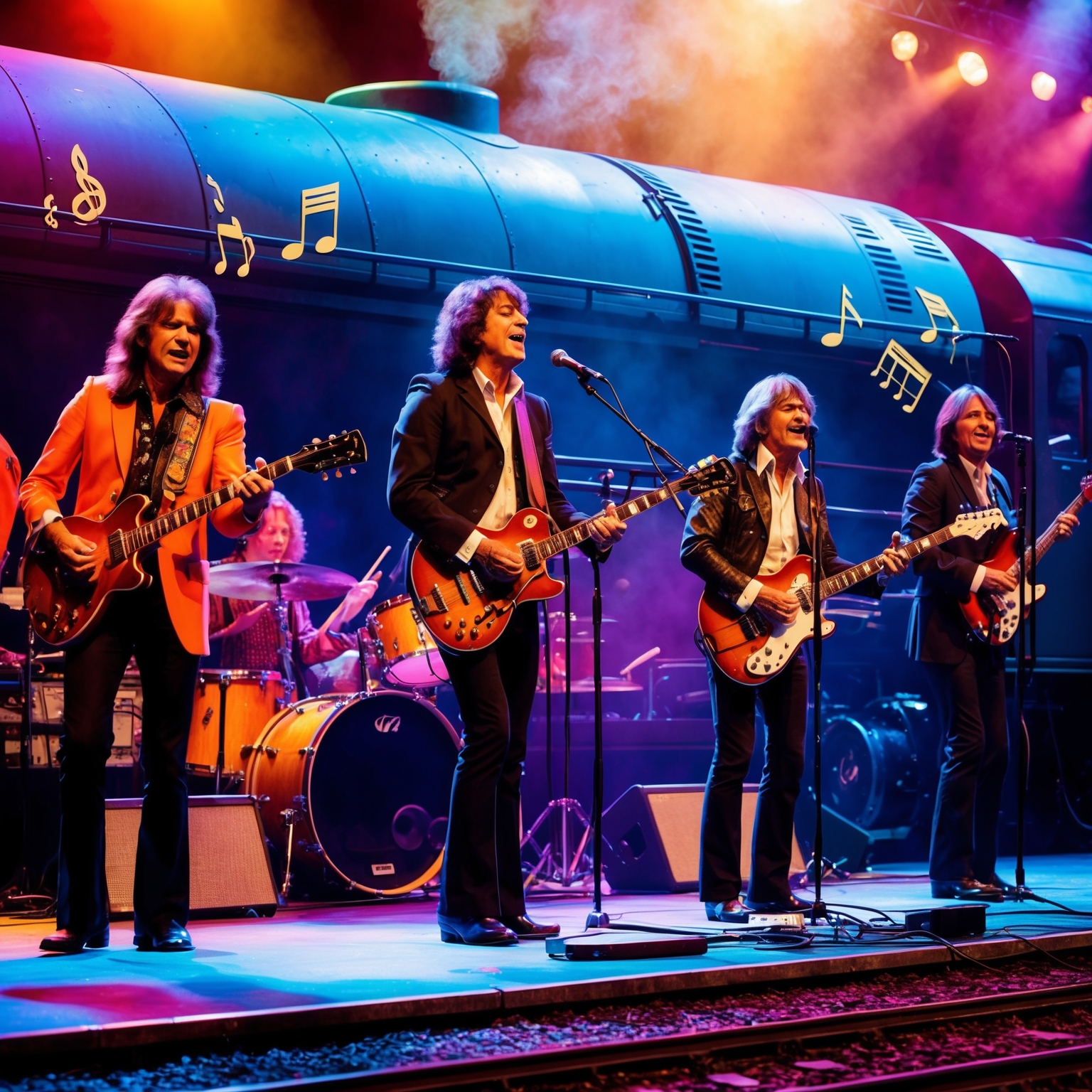
Visual Interpretations: Although the original release of “Long Train Runnin'” by The Doobie Brothers did not feature an official music video, the timeless track has been brought to life through various other visual interpretations over the years. As MTV rose to prominence in the 1980s and music videos became a staple of popular music culture, many classic tracks experienced a renaissance, including fan-made and live performance videos that embodied the spirit of the era.
One popular visual take on “Long Train Runnin'” comes from the various recorded live performances by The Doobie Brothers. These performances showcase the energetic stage presence of the band and capture the essence of their groove-infused rock sound. The live renditions often highlight the band’s tight instrumentation and dynamic vocal harmonies, offering fans a chance to experience the song in a visually compelling format. These videos have contributed significantly to sustaining the song’s popularity, giving it a lasting presence on video-sharing platforms and television broadcasts.
Additionally, several fan videos and lyric videos have emerged, utilizing montages and creative imagery to interpret the song’s themes. These fan-created visuals often blend nostalgic elements and train imagery, aligning with the song’s rhythmic momentum and travel motifs. Such creative expressions contribute to the song’s enduring appeal, providing fans with new ways to connect with its infectious beats and melodies.
Diving into the Musical Architecture of ‘Long Train Runnin”
Long Train Runnin” by The Doobie Brothers is a musical masterpiece featuring a fusion of rock, soul, and funk, exemplified in its distinctive chord progressions, energetic rhythm, and diverse instrumentation. It marks a pivotal point in the band’s evolution, showcasing a shift towards a funkier style.
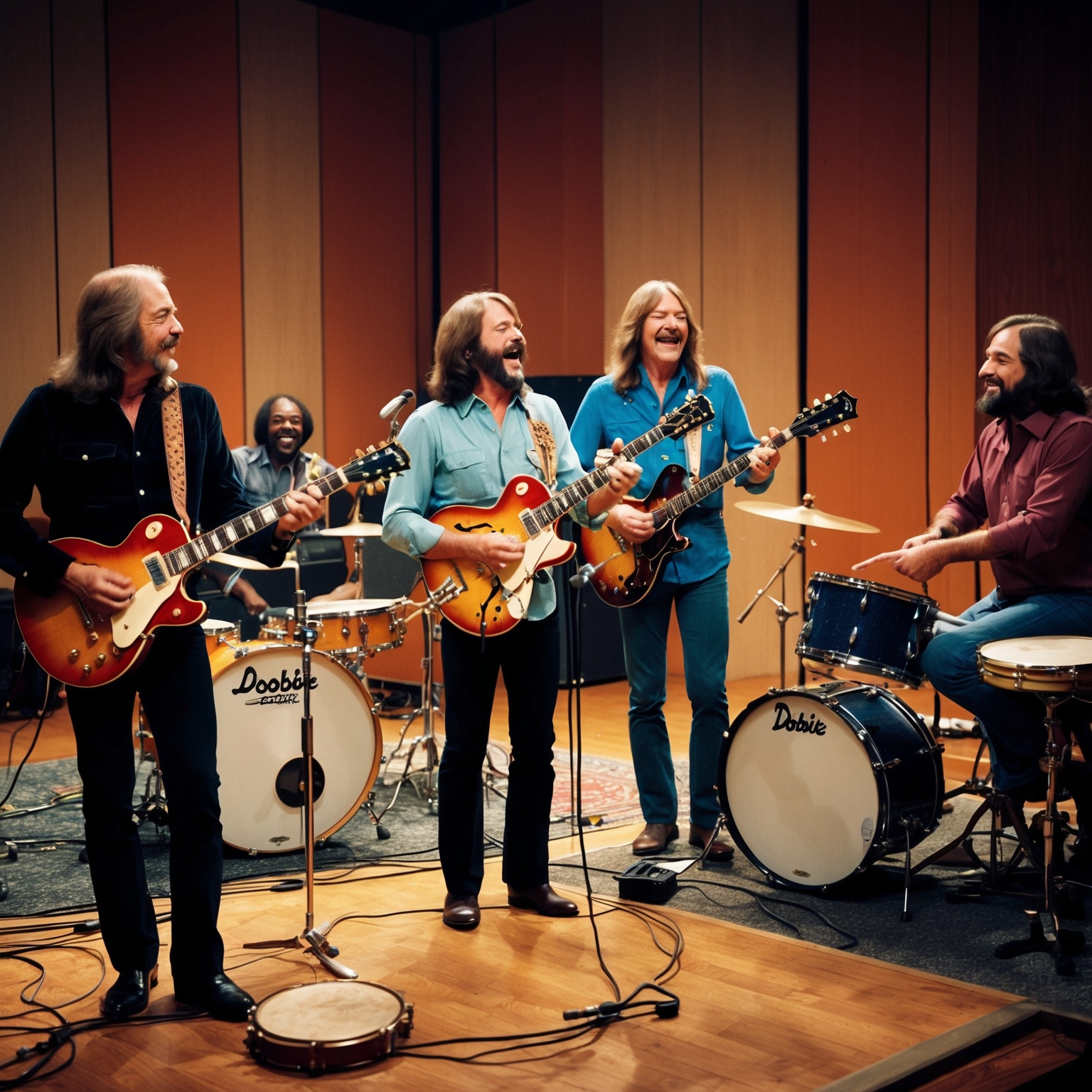
The Doobie Brothers’ ‘Long Train Runnin” is a masterclass in musical structure, illustrating a seamless blend of rock, soul, and funk elements. The song is primarily set in the key of G minor, a choice that lends it a soulful, laid-back vibe that invites listeners into a rhythmic journey. It’s structured around a repeating chord sequence of Gm7, Cm7, and D7, offering a robust yet simple foundation upon which the intricate layers of rhythm and melody are built. The tempo is set at a brisk 118 beats per minute, providing an upbeat energy that propels the song forward and correlates with its train-themed motif.
A deeper analysis reveals how the song marries melody with harmony and rhythm to achieve its timeless appeal. The melody, carried expertly by Tom Johnston’s raw, gritty vocals, soars over the complex chord changes, while the lush vocal harmonies add richness and depth, characteristic of the Doobie Brothers’ signature sound. The song’s rhythm is accentuated by its syncopated guitar riffs and energetic percussion, giving it an infectious groove that compels movement.
Instrumentation plays a pivotal role in defining the unique sound of ‘Long Train Runnin’. The guitar, often playing a syncopated funk riff, is complemented by a dynamic mix of tambourine, congas, and more traditional rock instruments like drums and bass guitar, all coalescing to create a dynamic soundscape. The rich array of instruments used in the track not only showcases the band’s versatility but also paints a sonic picture that is both textured and engaging.
In the context of the Doobie Brothers discography, ‘Long Train Runnin” signifies a key evolutionary moment. Prior to this track, the band had been primarily immersed in more folk and rock-oriented sounds, as seen in earlier albums like ‘Toulouse Street.’ This song marked a shift towards a funkier, groovier aesthetic that would come to characterize much of their subsequent work, including the acclaimed album ‘What Were Once Vices Are Now Habits’, illustrating a broader thematic and sonic maturity the band was undergoing.
Interestingly, the song’s recording at Warner Bros. Studios was marked by its spontaneous creation process. The producers, Ted Templeman being notable among them, capitalized on Johnston’s longstanding love for the song’s foundational riff, which he had been tinkering with for years during live shows. This improvisational vigor lends the track its vibrant and organic feel, capturing a moment of creative synergy that has since etched its place in rock history.
Unpacking the Themes and Stories within ‘Long Train Runnin”
Dive into the evocative lyrics of ‘Long Train Runnin’ by the Doobie Brothers that explore themes of love, life, and resilience. Through storytelling, metaphors, and vivid imagery, the song poses profound questions that resonate deeply with audiences.
See them often run, and you watch them disappear
Without love, where would you be now?
Without loveYou know I saw miss Lucy down along the tracks
She lost her home and her family and she won’t be coming back
Without love, where would you be right now?
Without love
Well, the Illinois Central
And the Southern Central Freight
Got to keep on pushin’ mama
You know they’re running late
…
******* This Lyrics is NOT for Commercial use *******
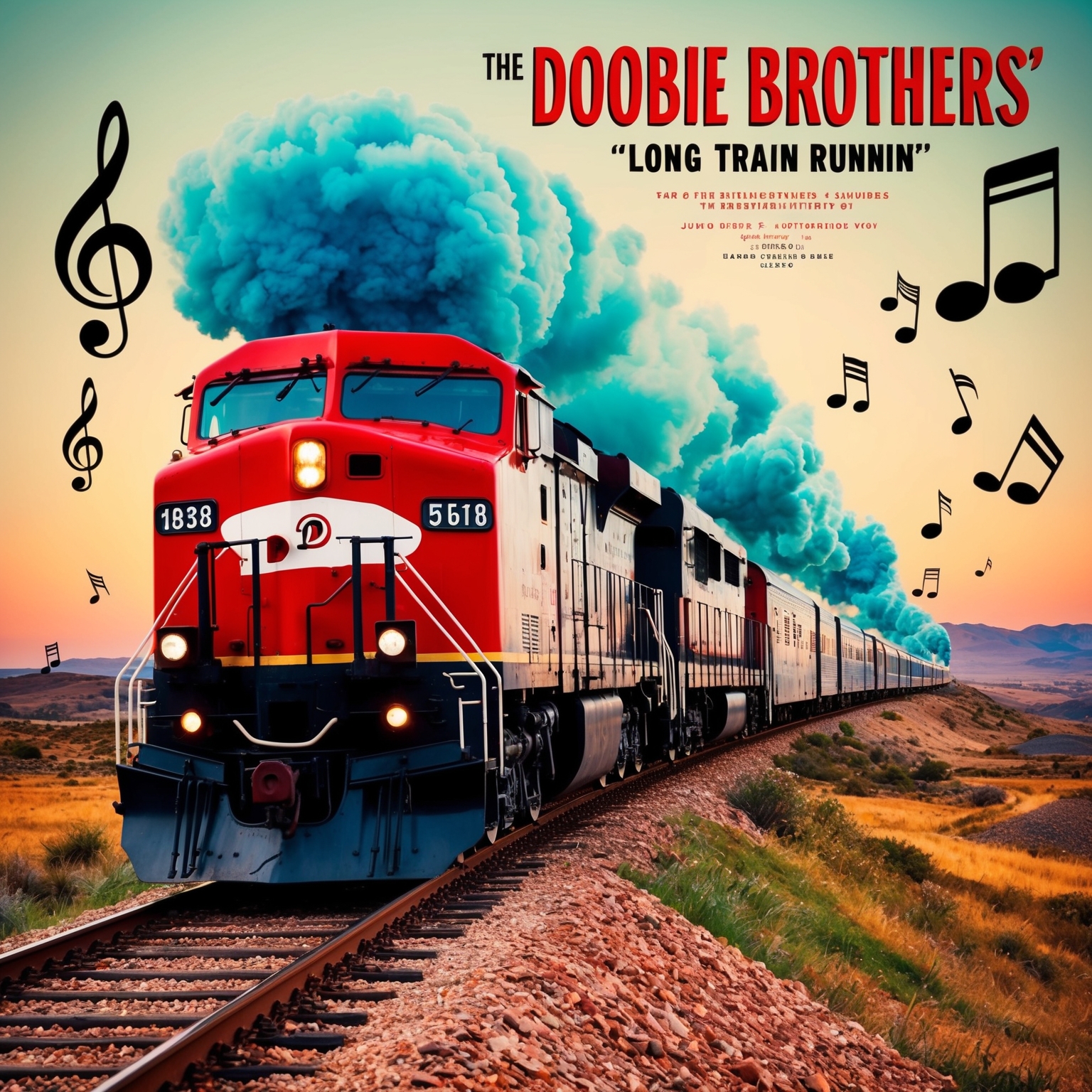
At its core, ‘Long Train Runnin” by the Doobie Brothers is a metaphorical journey through the indispensable nature of love and continuity. The song’s recurring lyrics, “Without love, where would you be now?”, pose a reflective question that captures the essence of reliance on love as a foundational element in life. Through this theme, the song navigates the precariousness of human existence without the guiding force of love, resonating with audiences of its era and beyond.
The lyrics are penned in a narrative style that introduces listeners to various characters, like Miss Lucy, whose life challenges embody the hardships magnified by the absence of love and support. Verses like “She lost her home and her family and she won’t be coming back,” employ a third-person perspective that adds an observational layer to the storytelling, allowing the audience to empathize with these stories from an external viewpoint. This perspective amplifies the compelling impact of the song, making listeners consider the broader implications of love—or the lack thereof—in different contexts.
The literary devices utilized in the song’s lyrics further enhance its richness. Metaphors and vibrant imagery, seen in lines like “Down around the corner, half a mile from here,” paint a vivid picture of life’s journey, with the train serving as a symbol for the unstoppable progress and sometimes chaotic pace of life. Musical parallels can be drawn within the genre, yet the Doobie Brothers’ masterful use of metaphors and succinctness in storytelling remains distinctive, giving the song its unique charm. Additionally, the simple but profound repetition of the titular phrase reinforces the central theme, leaving a lasting imprint on listeners.
🚂✨ Did you know Long Train Runnin’ was born from live jam sessions? 🎸 Talk about spontaneous rock magic! 🤘 #DoobieBrothers #FunFact #RockHistory https://bit.ly/3Yg6nSZ
Click to Tweet

